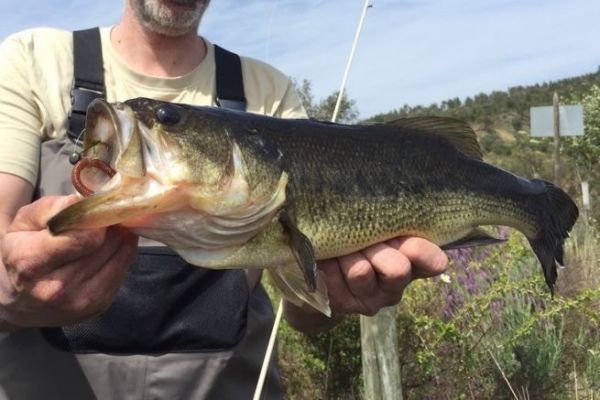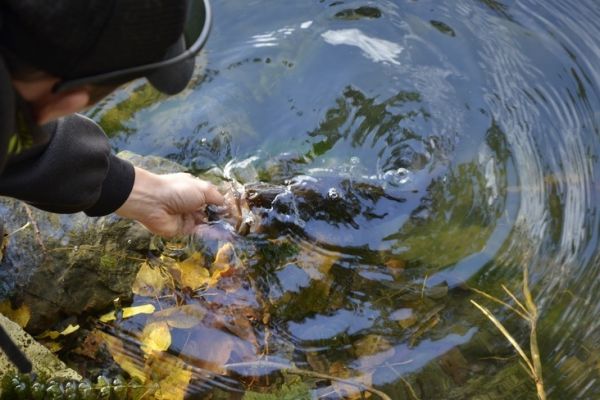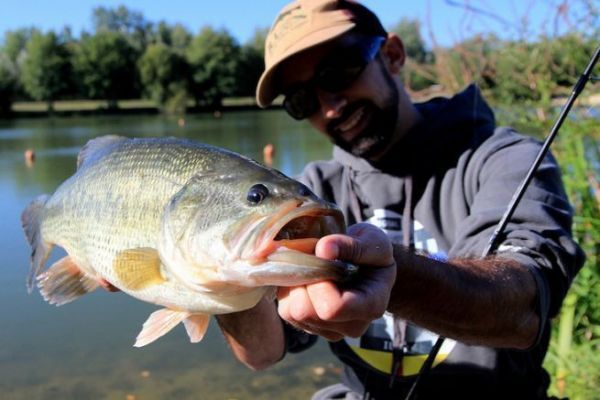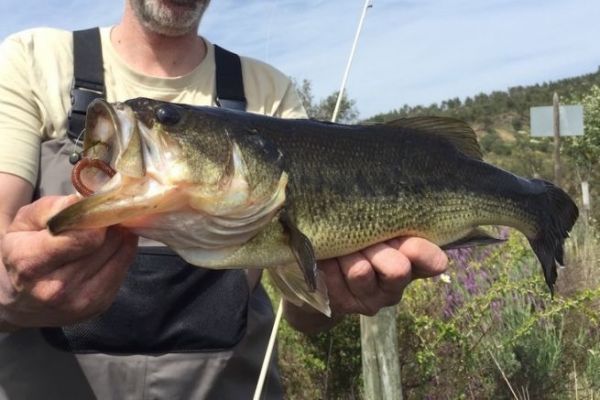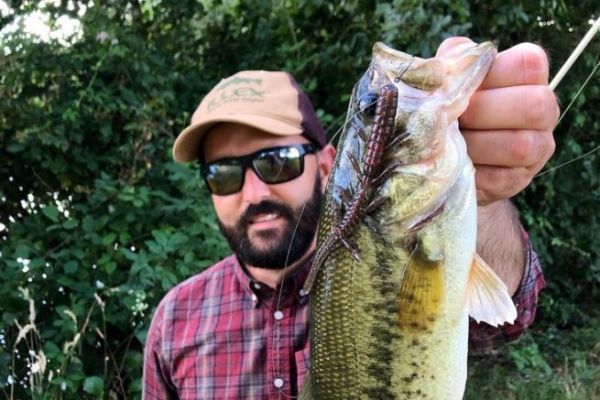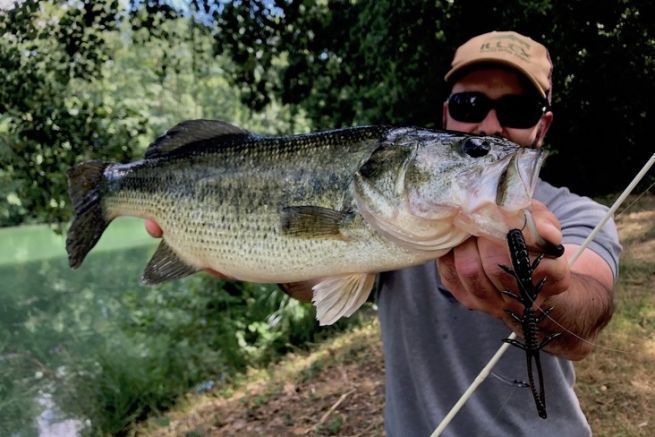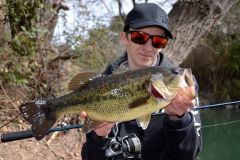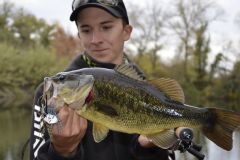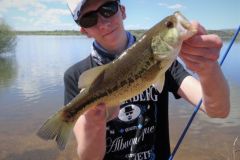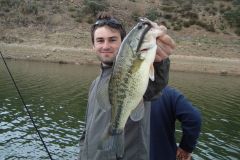After devoting an article to the neko Rig assembly here's another lesser-known variant of the Wacky montage, but just as effective if used wisely!
It's all in the head

In appearance, Wacky and Inch Wacky rigs are very similar. The only difference is in the rig, which consists of a single hook for the Wacky and a weighted head (Jighead) for the Inch Wacky (or Jighead Wacky), and it's this little difference that makes all the difference!
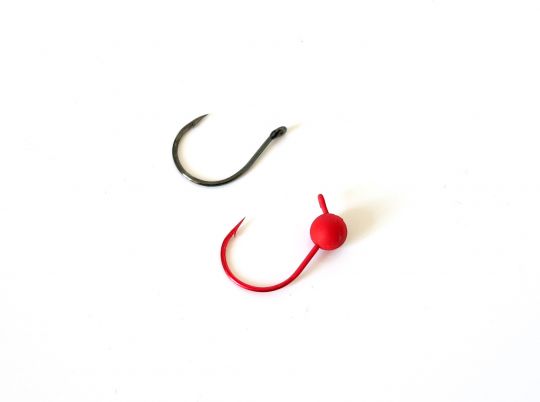
The weight of this weighted head will generally vary between 0.5 and 3.5 g, a weight to be adjusted according to the depth and/or action you wish to give to your rig. In addition, weighted heads specially designed for Inch Wacky are very often made of tungsten, for two main reasons: 1) a better size/weight ratio compared with lead and 2) better bottom perception due to the much greater resonance of tungsten compared with lead, which is even more important when using "Finesse" techniques (add to this the fact that tungsten is inert in the aquatic environment and you have a third reason to use it...).
Last but not least, these heads are characterized by an offset eyelet due to the "elbow" to which the ballast is attached, which accentuates the pendulum movement of the lure each time it is pulled along the bottom.
I use two types of weighted heads: with anti-weed system (Damiki Kaiser Tungsten Jig) and without anti-weed (Maruto Shank Chotto Red). In both cases, the hook shank is short and wide, allowing good release of the lure when striking.
Wacky Vs Inch Wacky
The advantage of the Inch Wacky over the Wacky is that you can fish deeper and faster, and accentuate the worm action on the way down. The Inch Wacky also makes it easier to animate the lure on the bottom and to better control the line as the rig descends to the bottom.

Various possible applications
The basic animation of this montage is performed on the bottom. The montage placed on the bottom will be retrieved by small successive jumps interspersed with Shaking-type animations (jerky animations on the spot) in order to imitate a worm contorting itself on the bottom. The gestures are much the same as those used to animate a montage Neko Rig but more straightforward.
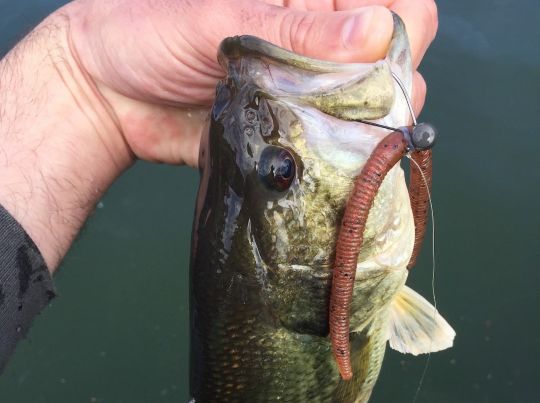
Another very effective application is shaking animations, off the bottom or between two waters, on vertical fishing over structures (e.g. roots). Because of the weighted head, jerky animations on the spot are much easier with the Inch Wacky than with the Wacky rig, which only allows slow, fine movements. Note that dry, jerky animations are best reserved for perch, while black bass prefer subtle animations.
Finally, even though this rig is designed to be animated on the bottom, it can sometimes be intercepted on the way down. In the same way as with a Rubber Jig, this can be a fishing strategy that relies on reflex attacks by the fish. The principle is to give the fish no time to analyze their prey.
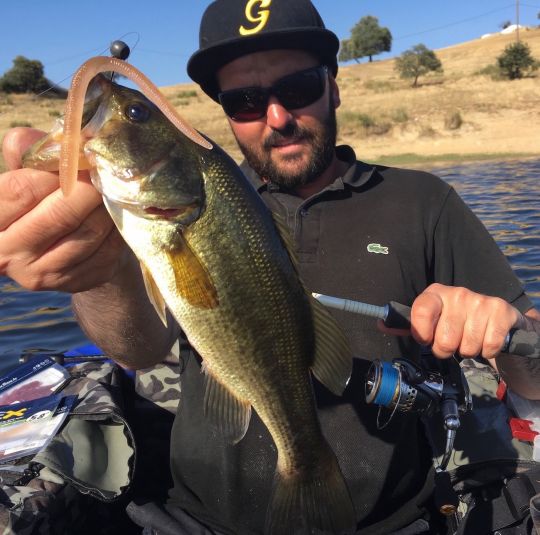
You can play with the nature of the worm, the weight of the weighted head (Jighead) and its position along the body of the worm. While the worm will slow down the descent of the rig, as with the unweighted Wacky, you can offset the Jighead to increase the speed of the rig's descent into the water column.
All these features make the Inch Wacky a versatile, effective and inexpensive alternative to Wacky and Neko Rig rigs. A classic for black-bass but an under-used technique for perch. And wrongly so!

 /
/ 